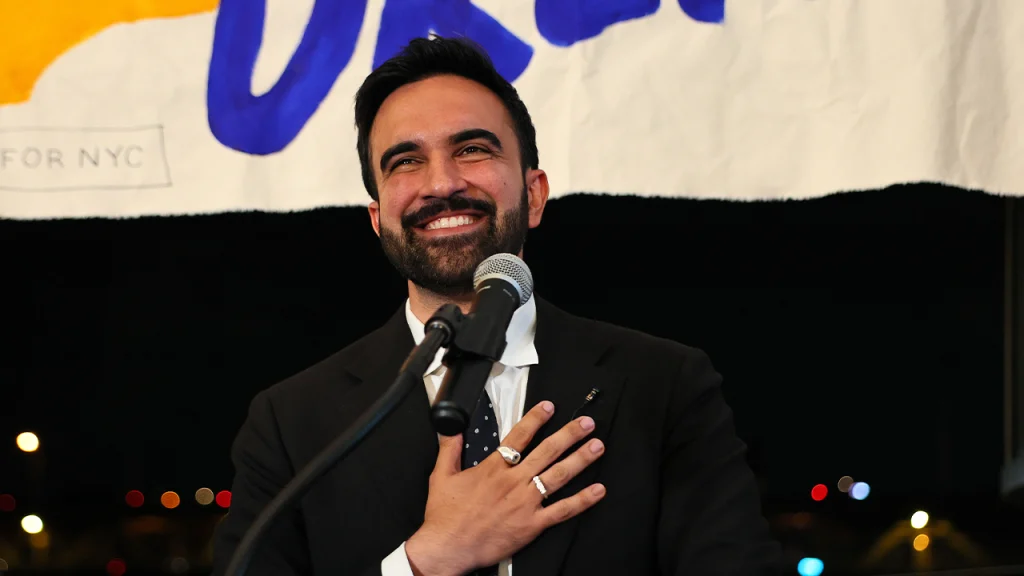New York’s Socialist Mayoral Candidate Proposes Controversial 911 Dispatch Reform
In a recent Spectrum News New York 1 mayoral debate, Democratic nominee Zohran Mamdani outlined his vision for transforming emergency response in New York City. The socialist candidate proposed giving 911 dispatchers greater authority to determine whether police officers should be sent to emergency calls, particularly those involving mental health crises. According to Mamdani, dispatchers would be trusted to assess if there were “any indication of violence” before deploying police units. He claimed this approach has proven successful in other parts of the country, though he did not cite specific examples. This proposal represents a significant shift in how America’s largest city would handle emergency situations, potentially replacing police officers with social workers or “transit ambassadors” in certain circumstances.
The proposal has drawn sharp criticism from law enforcement experts who question both its practicality and safety implications. Joseph Giacalone, a retired NYPD sergeant and criminal justice professor at Penn State Lehigh Valley, called it “probably the worst idea I’ve heard of in a long time,” highlighting concerns about dispatcher liability and potential fatal consequences of misjudgments. John Macari, a retired NYPD lieutenant with extensive experience responding to calls involving emotionally disturbed persons, emphasized that such situations are “unpredictable and volatile” and cannot be safely assessed over the phone. Both experts expressed concern that the population density and unique challenges of New York City make this approach particularly risky compared to smaller municipalities. Macari suggested that under pressure, dispatchers would likely err on the side of caution anyway, sending police to most calls regardless of the new protocols.
Mamdani’s current proposal appears to be at odds with his previous public statements about law enforcement. While he now insists he would not defund the NYPD if elected mayor, his social media history tells a different story. In December 2020, he wrote on X (formerly Twitter): “Defund it. Dismantle it. End the cycle of violence,” while describing the department as “wicked & corrupt.” He has previously characterized the NYPD as “racist, anti-queer & a major threat to public safety” and advocated reallocating police funds to homeless services. Critics like Giacalone suggest that Mamdani’s fundamental views haven’t changed, despite his recent moderation in rhetoric, pointing to his earlier declaration: “Together, we can tax the rich, heal the sick, house the poor, defund the police & build a socialist New York.”
The debate over emergency response reform comes at a crucial time for New York City, as it continues to navigate public safety concerns in the post-pandemic era. Mamdani’s proposal reflects broader progressive movements advocating for alternatives to traditional policing, particularly for mental health crises. Proponents argue that armed officers may escalate volatile situations involving people in psychological distress, while trained mental health professionals might achieve better outcomes. However, critics counter that removing police from potentially dangerous situations could endanger both civilians and social workers. The dispute highlights fundamental disagreements about public safety approaches, with traditional law enforcement advocates emphasizing the unpredictability of emergency calls and progressive reformers focusing on community-based alternatives to armed police response.
Mamdani’s campaign has not provided additional details about how the proposal would be implemented, leaving important questions unanswered. Would dispatchers receive specialized training? How would liability be addressed if a situation turns violent after police were not deployed? What specific experiences from other cities inform this approach, and how comparable are those municipalities to New York’s unique urban landscape? These unanswered questions underscore the complexity of emergency response reform in America’s largest city. Meanwhile, law enforcement veterans like Macari suggest the proposal appears to be “a talking point” rather than a fully developed plan, arguing it seems to have been “drafted without any consultation with dispatchers, first responders or the families of those struggling with mental illness.”
The mayoral race between Mamdani and Republican candidate Curtis Sliwa now represents a stark ideological choice for New York voters on public safety issues. Mamdani’s primary victory over Andrew Cuomo earlier this year surprised many political observers, with some suggesting it reflected anti-Cuomo sentiment rather than enthusiastic support for Mamdani’s progressive platform. As the general election approaches, New Yorkers face a fundamental choice about the future direction of their city’s approach to public safety, emergency response, and policing. The outcome will have significant implications not just for the NYPD but for how America’s largest city addresses mental health crises, homelessness, and public safety in communities across all five boroughs. With such contrasting visions on display, voters will ultimately decide whether traditional law enforcement approaches or progressive reforms will shape New York’s future.


